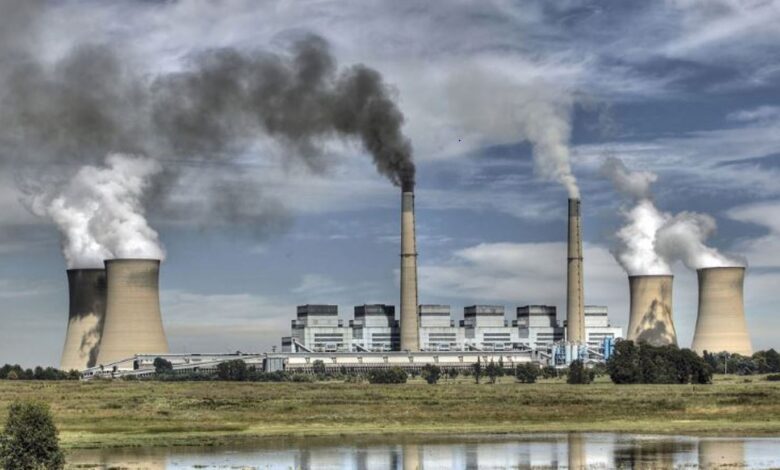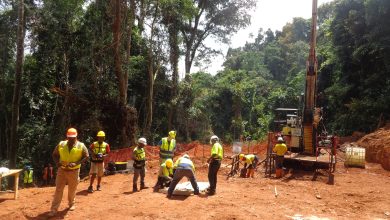
Wet scrubbers for dust control in mining projects
Misting away particulates for cleaner air
Misting away particulates for cleaner air
Modern wet scrubber systems can remove over 99 percent of ultrafine particulates from dust, creating a safe working environment for mineworkers.
Any product is as effective as its correct application.
This is conventional wisdom that industry doyens share, and it is what leading manufacturers of wet scrubbers used in dust control for mining and other industries more or less echo in concurrence.
The message could not have come at a more perfect time.
Health hazards
Currently, mine sites are a beehive of various activities—drilling and blasting, grinding and blasting, name it. Emissions from equipment for these applications are a health hazard to the worker.
Wide range of mitigation measures
Thankfully, with unprecedented technological advances, mines have a wide range of hazard mitigation measures. However, this hinges on the wisdom of their choices in getting the most suitable solution to handle ultrafine particulate matter, due to the differences in dust properties. The health risk workers face when exposed to PM is highlighted in the article on electrostatic precipitators.
The options
Mines use cyclone dust collectors, scrubbers, cartridge collectors, and conventional air bag house filters where there is a need for clean air free of vapours, particulates, and gases. Each of these options has its unique upsides and downsides.
Wet scrubbers
Product selection is application-specific, depending on the end-users’ preferences. However, it is generally agreed that wet scrubbers are most appropriate for dust with certain properties, which conventional baghouse filters cannot handle effectively. Specifically, where cleaning a moisture-laden gas stream is involved, the wet scrubber would be the tool of choice.
Water as the medium
Dry dust filtration extraction systems use filter elements. On the other hand, in wet scrubber systems, water or water-based media are the media used to collect pollutants from the exhaust stream. Generally, wet scrubbers work best where there is a need for an effective technique of cleaning or ‘scrubbing’ emissions to eliminate vapours, gases, and particulate matter (PM).
Ideal applications
Usually, wet scrubbers prevail in the following conditions:
- Combustible dust
Wet scrubbers are ideal where the particulate being collected is combustible, involving combustible dust. Using water to eliminate the particulate, a wet scrubber minimises the risk of an explosion in the scrubber. Of course, the level of risk depends on the type of dust, particulate size, temperature, and concentration.
Some would suggest outfitting dry scrubbers with safety equipment to deal with safety risks. But can’t this escalate the system’s cost, defeating the objective of saving costs by purchasing conventional baghouse filters?
What also comes to the fore is that, in most cases, dust-related explosions in bag house filters are due to poor maintenance. However, where ongoing maintenance is to be carried out religiously, the exercise is costly.
On the whole, there is no question that in applications involving combustible dust, a wet scrubber eliminates the risk of an explosion.
- Moist gas streams
The sticky material in the bag houses blinds and filters, necessitating unplanned replacement costs. Empirical evidence from projects demonstrates that wet scrubbers handle this challenge well, achieving a separation level of 99 per cent of ultrafine particulate.
- Abrasive slurry characteristics
In dry extraction systems, the abrasive nature of the slurry can result in clogging and erosion of injection nozzles. For instance, the sticky material in bags houses blinds and filters, necessitating unplanned replacement costs. This can increase maintenance costs.
Reality check
There is a reality check. For all their benefits, in fairness, wet scrubbers have downsides. The following are most often cited:
- High initial costs
Obviously, the high initial cost is due to their durability. The most common material of construction used is stainless steel to handle corrosive liquids. On the other hand, bag houses, cartridge collectors, and dust cyclones are made of cheaper carbon steel.
- Higher energy costs
Another plain fact: a wet scrubber—venturi scrubbers, in particular—has higher energy costs than a dry extraction system. This is given that more force is required to mix water with exhaust gas. Typically, high-horsepower fans are used to perform this task.
- Waste disposal
Secondly, as a wet scrubber collects contaminants, the water gets dirty and must be replaced to meet pollution targets. Besides, waste disposal comes at a cost.
Weighing up the options
In the present atmosphere, the issue of initial cost versus long-term gain crops up when mining management is discussing procurement decisions. While considering costs is the easy way out, what emerged from the discussion is that mining companies have to weigh up the potential consequences of industrial accidents due to settling for the cheaper option. A thorough risk and benefit analysis has to be carried out on the merits or demerits of a scrubber in a particular application. Now some food for thought: What is rational? Settling for a conventional air bag filter against the seemingly high initial cost of purchasing a wet scrubber and facing the consequences, or taking a long-term view?
Ultimately, a wise decision is worth weighing in gold. The adage ‘better safe than sorry’ resonates.
Where the objective is to address the inherent limitations experienced with a conventional air bag filter, a switch to a wet scrubber would be feasible. Some manufacturers claim wet scrubbers can remove up to 99 per cent of particulates that are too small to be caught in baghouses and cartridge filters.
Seeking expert advice
Overall, it is important to avoid making a costly gamble by seeking advice first. It is important to ask difficult questions to manufacturers or a highly-regarded sage in the field. Would a wet scrubber be recommended?
Mainly, pollutants to be separated, particle size, and dust load in the emissions determine the selection of the scrubber type. Manufacturers of wet scrubbers concur that the following factors top the list of prominent client preferences for wet scrubbers: high water collection efficiencies, low water recirculation, minimum pressure drop, and high absorption efficiency for liquids and vapours.






